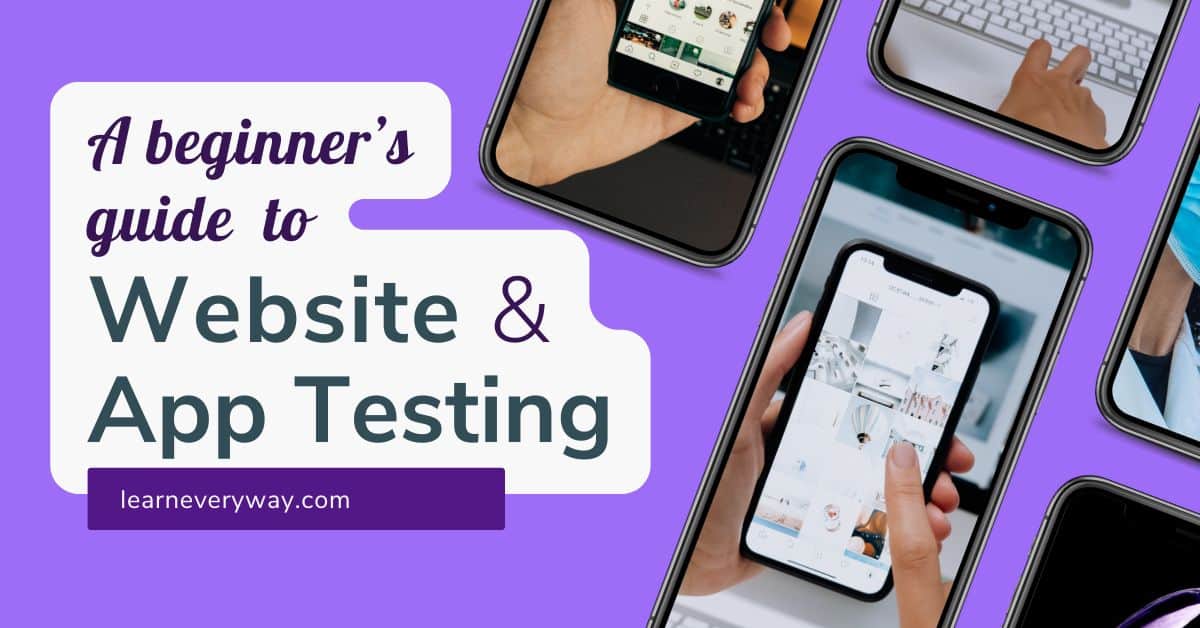Some of the links in this article are affiliate links, which means I may earn a small commission if you sign up or make a purchase through them, at no additional cost to you. Please note that my opinions and experiences are based on my own research and use of the platforms. I only recommend products and services that I believe will be valuable to my readers. Thank you for supporting my work!
Creating, marketing, and selling digital products globally is an exciting and highly lucrative venture in today’s interconnected world. With the right approach and resources, you can transform your expertise or passion into a global online business. Whether you are new to digital entrepreneurship or looking to scale, this guide will provide you with all the essential steps needed to build a profitable digital product business.
By the end of this article, you’ll know how to create, market, and sell digital products globally, with step-by-step instructions, valuable tools, and strategies that can be expanded into individual blog posts for further in-depth exploration.
Introduction: Learn Every Way to Create, Market, and Sell Digital Products Globally
The world of digital products is vast, with opportunities available to anyone who is willing to put in the effort. Whether it’s an eBook, a course, or even digital art, the power of digital products lies in their ability to reach anyone, anywhere in the world. Creating digital products is one of the most accessible and cost-effective ways to start an online business, especially with the availability of platforms and tools that simplify the entire process.
In this article, I will break down the process into manageable steps that you can follow, making it easy to launch your digital products globally. Learn every way to effectively design, promote, and sell your digital products by using the best tools, platforms, and strategies for global reach.
Step 1: How to Create Digital Products That Sell Globally
The first step in your journey is to create digital products that are valuable, attractive, and easy to distribute. But how do you choose the right product? How do you make it unique and ensure it has the potential for success in a global market?
1.1 Types of Digital Products to Create
There are numerous types of digital products you can create. Here are some common ones:
- eBooks: eBooks are one of the most popular digital products. They are especially great for authors or individuals with knowledge to share. The process of creating an eBook is straightforward and cost-effective.
- Online Courses: If you have expertise in a certain field, creating an online course can be an excellent way to share your knowledge. With platforms like Teachable and Udemy, creating and selling courses is relatively simple.
- Printables: These are downloadable PDFs like planners, checklists, or worksheets. Printables have a low production cost and high profit margins, making them a great option for beginners.
- Software: If you’re tech-savvy, developing a software tool or an app can be a profitable digital product. Whether it’s a productivity tool, design software, or a mobile app, there’s a huge demand for digital tools globally.
- Stock Photos and Art: Graphic designers, photographers, and digital artists can sell their creations through platforms like Shutterstock or Etsy. High-quality images and art are highly sought after for websites, blogs, and social media content.
- Music and Audio Files: If you have music production skills, you can sell soundtracks, royalty-free music, or audio effects for videos, podcasts, or media production.
- Membership Websites: Create a membership site with exclusive content that users pay for. This could include training, educational materials, or a community for sharing knowledge and advice.
1.2 Tools and Resources for Creating Digital Products
To create professional-grade digital products, you need the right tools. Luckily, there are several powerful yet user-friendly platforms to help you along the way:
- Canva: For beginners, Canva is an easy-to-use design tool that allows you to create professional-quality graphics, eBooks, presentations, and printables.
- Teachable: Teachable is an excellent platform for creating and selling online courses. It offers customizable templates and various features like quizzes and certifications.
- Podia: Podia is another all-in-one platform that allows you to sell digital products, courses, memberships, and even webinars.
- Audacity: If you plan to create podcasts or audio files, Audacity is a free, open-source software for recording and editing audio.
- Gumroad: Gumroad is a great platform to sell eBooks, digital art, music, and more. It’s simple to use and perfect for creators who want to start selling quickly.
- Photoshop: If you’re into advanced design work, Photoshop is the go-to tool for creating digital art or photo editing.
1.3 Tips for Creating High-Quality Digital Products
The quality of your digital product plays a huge role in how successful it will be. Here are some tips for ensuring your products meet global standards:
- Research Your Audience: Know who your target customers are and understand their pain points. Make sure your product solves a problem or fulfills a need.
- Focus on Design: Whether you’re making an eBook or an online course, professional design is key. A well-designed product gives the impression of quality and credibility.
- Iterate and Test: Don’t hesitate to improve your product based on feedback. Test your product with a small group before launching it to a broader audience.
- Use a Clear and Simple Structure: Keep your content clear and well-organized. If you’re creating an online course or a PDF guide, structure your content so it’s easy for people to understand and follow.
Step 2: Learn Every Way to Market Your Digital Product Globally
Once your digital product is ready, marketing it is the next crucial step. Marketing allows you to get your product in front of a global audience. Here’s how to do it effectively.
2.1 Understand Your Target Audience
Knowing who you’re marketing to is essential for effective digital marketing. Here’s how you can understand your audience better:
- Use Analytics Tools: Platforms like Google Analytics, Facebook Insights, and Instagram Analytics give you data about the demographics, behavior, and preferences of your audience.
- Survey Your Audience: Ask your followers directly about their needs, interests, and what type of content or products they’re looking for.
- Look at Competitors: Analyze your competitors’ marketing strategies and see what works for them. This can give you ideas about your own product and marketing plan.
2.2 Build Your Online Presence
To reach a global audience, you need an online presence. Here are some key aspects:
- Create a Website: Use website builders like WordPress, Wix, or Squarespace to build a professional website. A website helps to create trust and legitimacy.
- Start a Blog: A blog is an excellent tool for sharing valuable content that draws visitors. Write blog posts related to your product and provide free resources to build an audience.
- Leverage Social Media: Platforms like Instagram, Facebook, TikTok, and Pinterest are essential for growing your reach. Use these platforms to connect with your audience and promote your products.
- Build an Email List: Use tools like Mailchimp or ConvertKit to create an email list. Email marketing helps you keep your audience informed about new products, sales, or promotions.
2.3 Use SEO to Increase Visibility
Search Engine Optimization (SEO) is vital to ensure your product gets found on search engines like Google. Here are some tips:
- Keyword Research: Use tools like Google Keyword Planner, Ahrefs, and Ubersuggest to identify keywords that people are searching for in your niche.
- Optimize Your Website: Ensure your website is optimized for search engines by including relevant keywords in the title tags, meta descriptions, and body content.
- Create Valuable Content: Write blog posts, create videos, or produce podcasts that are optimized for search engines. The more valuable content you create, the more likely people will find your product.
- Build Backlinks: Build backlinks by having other websites link to your content. This increases your site’s authority and boosts your SEO rankings.
Step 3: Learn Every Way to Sell Digital Products Globally
Selling your digital product globally requires the right tools and strategies. Here’s how to set up a system to make global sales easy.
3.1 Choose the Right Sales Platform
There are many platforms where you can sell digital products. Choose the ones that best suit your business needs and target audience.
- Etsy: Ideal for selling printables, digital art, and handmade items.
- Gumroad: Simple to use and great for creators selling eBooks, art, music, and more.
- Shopify: Shopify is an excellent choice for creating an eCommerce website to sell a range of digital products.
- Amazon KDP: If you’re selling eBooks, Amazon’s Kindle Direct Publishing platform is one of the best places to reach a global audience.
3.2 Pricing Your Digital Product
Pricing is a critical part of selling globally. You want to make sure your product is competitively priced but still reflects its value. Here are some pricing tips:
- Market Research: Look at what similar products are selling for, and adjust your price accordingly.
- Use Psychological Pricing: Consider using prices like $9.99 instead of $10. This small difference can increase conversions.
- Offer Discounts: Occasionally offering discounts or bundle deals can attract more customers.
3.3 Accepting International Payments
When selling globally, you need to make sure your payment system is set up to accept payments from customers around the world. Popular options include:
- PayPal: A reliable and secure payment system that’s used by millions worldwide.
- Stripe: A robust payment processor that supports many currencies and international transactions.
- Payoneer: Particularly useful for individuals who need to receive payments from countries where PayPal isn’t available.
Step 4: Scale Your Digital Product Business Globally
Once your digital products are launched and selling, it’s time to scale. Scaling your business allows you to increase revenue and reach a larger audience.
4.1 Automate Your Processes
Automation tools can save you time and improve efficiency. Here’s how you can automate different parts of your business:
- Email Automation: Use platforms like ConvertKit or Mailchimp to automate your email campaigns.
- Social Media Scheduling: Tools like Buffer or Hootsuite can help you schedule and manage social media posts.
- Payment and Delivery: Use tools that automate the payment processing and delivery of your digital products.
4.2 Expand Your Product Line
As your digital product business grows, consider diversifying your product offerings. Some ways to expand:
- Create New Products: Develop a new course or eBook on a related topic.
- Offer Upsells: Bundle products together or offer premium versions of your existing products.
- Affiliate Marketing: Partner with other businesses to promote your products and earn a commission for each sale.
FAQs: How to Create, Market, and Sell Digital Products Globally
1. What are the most popular digital products to create?
Popular digital products include eBooks, online courses, software tools, printables, stock photos, and music.
2. How can I market my digital products globally?
To market globally, build an online presence using a website, blog, and social media. Utilize SEO and content marketing to attract organic traffic.
3. How should I price my digital product?
Research competitors and consider the value your product provides. Use pricing strategies like psychological pricing or bundle offers.
4. Which platforms should I use to sell my digital products?
Platforms like Etsy, Gumroad, Shopify, and Amazon KDP are excellent choices for selling digital products.
5. How can I scale my digital product business?
Scale by automating processes, diversifying your product range, and leveraging affiliate marketing to grow your audience and sales.
Final Thoughts
Creating, marketing, and selling digital products globally doesn’t have to be complicated. Learn every way to optimize your approach, from creating high-quality products to marketing them effectively and scaling globally. By following these steps, you’ll be on your way to running a successful online business with a global reach.







